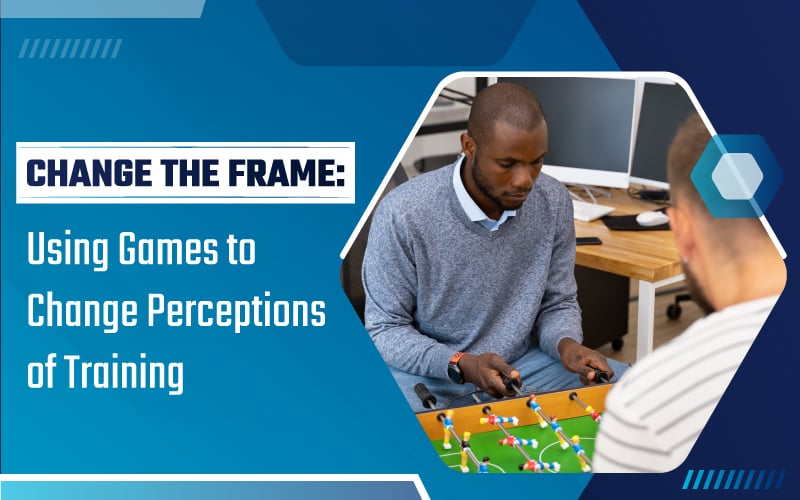Look at a game like Minecraft.
Players spend hours collecting raw materials and resources to make spectacular creations. But the act of gathering those resources can be mundane and tedious. Yet, Minecraft continues to see millions of players every day who log on and find enjoyment in the work.
The word “training” can sound like a chore. Training implies the need to learn something new, and while many do love to learn, the thought of having to learn something new sounds like work!
How do we change the perception, or frame, in which learners view their training?
In other words, how do we make training enjoyable and effective instead of feeling like work? We can harness the power of games and gamification.
Making “Chores” Enjoyable
Another video game franchise that continues to have a following, The Sims, has players perform housework as part of the game. Tasks include taking out the trash, going to work, cleaning the bathroom, and more. Not to make assumptions, but it’s likely many players would raise a fuss about taking out the actual trash, but somehow see no problem doing it for their virtual persona.
Why, then, do people willingly perform menial tasks in video games when they have issues performing the same tasks in real life?
The answer lies in the power of gamification.
Games have turned housework and labor into fun, engaging activities for millions of gamers. As a trainer, harnessing the power of gamification can help change the frame your learners have of their training. This increases people’s motivation to engage with your content because it’s more fun! And when people are more engaged, they pay more attention, which leads us to the magic word: retention.
First, what are the basics of gamification, and how can we harness them in our training regimen?
Gamification is Everywhere
Chances are, you’ve engaged with gamification recently and didn’t even realize it. Gamification is the act of applying gameplay elements (points, competition, rewards, etc.) to real-world situations.
For instance, maybe you’ve seen something like:
- Spend $100 and get 100 points
- Take 12,000 steps to unlock a special prize
- Save more money to unlock a higher interest rate
- Spin the wheel to get a percentage off your purchase
By offering points and rewards, these gamification techniques give you a little dopamine rush for completing everyday tasks, and you’re motivated to do it again. Repeat that task enough and unlock even more points for greater rewards.
This simple harnessing of gamification changes people's perceptions of playing games like Minecraft or The Sims, which involve working while having fun.
Why are Games like Minecraft so Popular?
Games like Minecraft and The Sims are shining examples of changing the frame. By applying the strengths of gamification, these games made players want to do chores and work by applying rewards and instant gratification.
In The Sims, characters’ needs like rest and hunger are shown to the player in green bars that turn red when they are hungry or need to sleep. If the player tells their character to grab a sandwich, the hunger bar quickly turns back to green and the character is happy.
Voila! A menial task in life, like eating, which is great, but gets repetitive, is turned into a moment of instant gratification for the player. You can see the fruits of your labor as you watch that red hunger bar turn green again, and your Sim becomes happy.
Using Games to Change the Perception
If you replace telling your Sim to grab a snack with motivating your employees to complete a series of bite-sized learning modules using an interactive, engaging, or story-driven game, you’re on your way to harnessing this power.
By combining the power of games and gamification with your training materials, you can change the perception of the word “training.”
When you offer game-based alternatives to traditional PowerPoint and eLearning courses, you can generate excitement and make learners more open to the experience.
Your competitive-minded learners, in particular, will perk-up at the idea of points, a leaderboard, and winning! Healthy competition can motivate learners, and at ELB Learning, you can control leaderboard settings to challenge players to beat a high score, improve their personal best, or some combination of both.
Use Games in Your Training Today
If you’re really attached to that PowerPoint you made all those years ago, why not throw a game on one of those slides to spice things up? Just like a pop quiz, a game can wake up your learners, get their ideas flowing, and, most importantly, get them interacting with the training material you worked so hard to create.
By incorporating the mechanics and goals above, you will be well on your way to empowering your learners with gamification. Whether you want to gamify your classroom, educate your sales team, or improve a virtual meeting, games will boost engagement, effectiveness, and your learners will have fun.
Check out our DIY gamification platform. And contact us to schedule a demo and start your free trial today.








